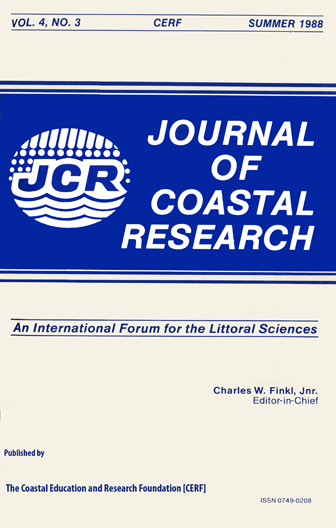Late Holocene Sedimentation and Erosion of Estuarine Fringing Marshes, York River, Virginia
Keywords:
Fringing salt marshes, erosion, accretion, sea-level change, storm waves, estuarine stratigraphyAbstract
Eleven vibracores and three 14C dates in conjunction with historical maps and charts were used to determine the late Holocene accretion and erosion of fringing York River estuarine salt marshes. Cyclical stages of marsh accretion and erosion were recognized, hypothetically beginning with an expansive marsh associated with a meandering tidal river. With rapid sea-level rise from the Holocene marine transgression, these marshes were drowned. A reduction in the rate of sea-level rise and low wave energy allowed fringing marshes to develop over the low energy, estuarine sediments. Subsequent increased rates of sea-level rise along with relatively large storm waves from a large fetch over relatively deeper estuarine waters result in the present erosion of the marshes. The results from this region are not in agreement with previous studies elsewhere that point to late Holocene and modern-day marsh accretion. The present local rate of sea-level rise may be too great for marsh expansion. However, the exposure to storm-waves was also of significant importance in the maintenance or erosion of the fringing marshes.


